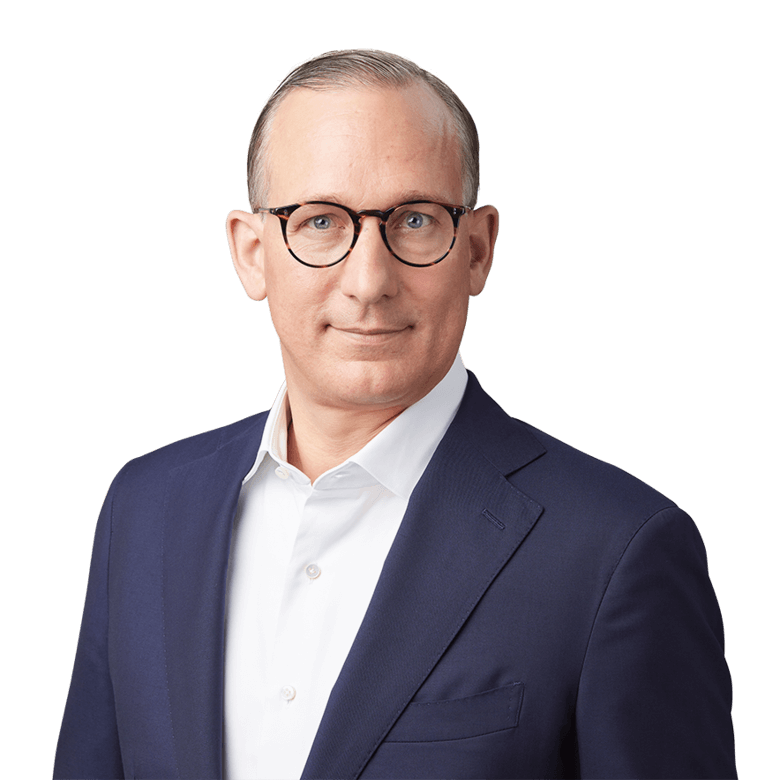
Bellevue Emerging Markets Healthcare
ISIN-No.: LU1585228452
YTD: 21.99%
Active share: 20.10
Anzahl Positionen: 49
Indexed performance (as at: 20.11.2025)
NAV: USD 131.38 (18.11.2025)
Rolling performance (20.11.2025)
| B-USD | MSCI Emerging Markets Healthcare Index | MSCI Emerging Markets Index | |
| 18.11.2024 - 18.11.2025 | 21.11% | 18.31% | 27.70% |
| 18.11.2023 - 18.11.2024 | -15.99% | -0.03% | 14.32% |
| 18.11.2022 - 18.11.2023 | -3.14% | -0.66% | 6.41% |
| 18.11.2021 - 18.11.2022 | -30.95% | -30.95% | -23.86% |
Annualized performance (20.11.2025)
| B-USD | MSCI Emerging Markets Healthcare Index | MSCI Emerging Markets Index | |
| 1 year | 21.11% | 18.31% | 27.70% |
| 3 years | -0.48% | 5.46% | 15.79% |
| 5 years | -8.19% | -4.30% | 4.94% |
| Since Inception p.a. | 0.59% | 1.18% | 6.20% |
Cumulative performance (20.11.2025)
| B-USD | MSCI Emerging Markets Healthcare Index | MSCI Emerging Markets Index | |
| 1M | 0.49% | 0.79% | 0.09% |
| YTD | 21.99% | 18.31% | 29.17% |
| 1 year | 21.11% | 18.31% | 27.70% |
| 3 years | -1.45% | 17.31% | 55.24% |
| 5 years | -34.77% | -19.74% | 27.26% |
| Since Inception | 5.10% | 10.44% | 66.44% |
Annual performance
| B-USD | MSCI Emerging Markets Healthcare Index | MSCI Emerging Markets Index | |
| 2024 | -14.91% | -0.90% | 7.50% |
| 2023 | -8.24% | -1.29% | 9.83% |
| 2022 | -19.39% | -23.50% | -20.09% |
| 2021 | -22.96% | -19.82% | -2.54% |
Facts & Key figures
Investment Focus
The fund’s aim is to achieve capital growth in the long term, is actively managed and invests in companies that have their registered office or carry out the majority of their economic activity in the healthcare markets of emerging countries. Its investment universe consists of generics producers, Show moreShow less
Investment suitability & Risk
Low risk
High risk
General Information
| Investment Manager | Bellevue Asset Management AG |
| Custodian | CACEIS BANK, LUXEMBOURG BRANCH |
| Fund Administrator | CACEIS BANK, LUXEMBOURG BRANCH |
| Auditor | PriceWaterhouseCoopers |
| Launch date | 31.05.2017 |
| Year end closing | 30. Jun |
| NAV Calculation | Daily "Forward Pricing" |
| Cut of time | 09:00 CET |
| Management Fee | 1.60% |
| Subscription Fee (max.) | 5.00% |
| Performance Fee | 10.00% (with High Water Mark) |
| ISIN number | LU1585228452 |
| Valor number | 36153232 |
| Bloomberg | BBAEMBU LX |
| WKN | A2DPAU |
Legal Information
| Legal form | Luxembourg UCITS V SICAV |
| SFDR category | Article 8 |
| Redemption period | Daily |
Key data (31.10.2025, base currency USD)
| Beta | 0.99 |
| Volatility | 19.19 |
| Tracking error | 8.28 |
| Active share | 20.10 |
| Correlation | 0.90 |
| Sharpe ratio | -0.03 |
| Information ratio | -0.66 |
| Jensen's alpha | -6.01 |
| No. of positions | 49 |
Portfolio
Top 10 positions
Market capitalization
Geographic breakdown
Breakdown by sector
Benefits & Risks
Benefits
- Access to defensive growth – emerging countries are facing aging populations and changing lifestyles.
- Development of healthcare infrastructure combined with a growing middle class is an additional growth driver.
- High growth potential of Emerging Markets.
- Attractive valuations compared with the projected medium to long-term growth.
- Bellevue Healthcare Team – top-performing pioneer in the management of healthcare portfolios in Emerging Markets.
Risks
- The fund actively invests in equities. Equities are subject to price fluctuations and so are also exposed to the risk of price losses.
- Investing in Emerging Markets entails the additional risk of political and social instability.
- The fund invests in foreign currencies, which means a corresponding degree of currency risk against the reference currency.
- The fund may invest in China A equities. This entails the risk of supervisory changes, volume caps and operating restrictions which may lead to a higher counterparty risk.
- The fund may invest a proportion of its assets in financial instruments that might under certain circumstances have a relatively low level of liquidity, which can in turn affect the fund’s liquidity.
Review / Outlook
Emerging markets’ performance was mixed in October, with strong gains in South Korea offset by weakness in Hong Kong and China. South Korea’s Kospi jumped 17.8%, India’s Nifty 50 rose 4.7%, and Brazil’s Ibovespa gained 1.0%. In contrast, Hong Kong’s Hang Seng Index fell 3.4%, and China’s CSI 300 was little changed, edging up 0.2%. Overall, the MSCI Emerging Markets Index advanced 4.2% for the month.
Emerging-market healthcare stocks fell 2.2% in October, underperforming the broader equity market. While the favorable Pfizer deal eased concerns over the most-favored-nation (MFN) pricing model in the US, Asian pharmaceutical companies benefited less than their US and European counterparts. Sentiment weakened further after the US Senate approved an amendment to the National Defense Authorization Act for FY 2026 on October 9 that included its version of the Biosecure Act, though no specific companies were named. The Bellevue Emerging Markets Healthcare Fund declined 3.4%, trailing its benchmark.
Samsung Biologics (+20.3%), Divi’s Laboratories (+18.5%), Sun Pharmaceutical (+6.1%), Alteogen (+4.7%), and Apollo Hospitals (+3.7%) were among the top contributors to the fund’s absolute performance. Samsung Biologics had another strong month after confirming that its fourth plant has been operational since Q2 2025 and will begin contributing to revenue in Q3. Divi’s Laboratories, a leading Indian contract development and manufacturing organization (CDMO), benefited from uncertainty surrounding Chinese CDMOs after the US Senate passed its version of the Biosecure Act. Sun Pharmaceutical benefited from the Pfizer deal mentioned above. Alteogen gained momentum after the recent approval of the subcutaneous version of Keytruda, a top-selling cancer drug. The formulation, developed jointly by Alteogen and Merck, highlights the strength of Alteogen’s platform technology.
Akeso (-19.6%), Sino Biopharm (-13.0%), WuXi Biologics (-11.6%), Innovent (-9.6%), and BeOne (-9.4%) were the largest detractors from the fund’s absolute performance. Akeso’s phase 3 China HARMONi-6 data was positive, with ivonescimab (AK112) showing a strong progression-free survival (PFS) benefit at the high end of expectations, but the company amended the HARMONi-3 trial protocol. Shares of Sino Biopharm fell amid a slowdown in China’s biotech out-licensing activity, though the company remains in talks to out-license several key drugs. WuXi Biologics continues to show strong fundamentals, but political risk related to the Biosecure Act continues to drive short-term share price volatility. Innovent shares declined after the company’s out-licensing deal with Takeda for two key assets, IBI363 (cancer immunotherapy) and IBI343 (gastric and pancreatic cancers), fell short of investor expectations. While the deal carried a headline value of USD 11 bn, the choice of partner caught investors off guard.
All performance data in USD/B shares.
Emerging markets are home to some of the world’s most dynamic growth economies and more than half of the global population. By 2050, Asian emerging economies are expected to generate over 50% of global economic output. As incomes rise, many of these economies are shifting from industrial-led growth toward service-driven models. A growing middle class is fueling demand for modern medicine, as health becomes an increasingly important priority. Massive investments in infrastructure, technology, and research are accelerating the modernization of healthcare systems, broadening access to higher-quality care. At the same time, demographic shifts are adding to demand. In 25 years’ time, China alone is expected to have nearly 400 million people over the age of 65, creating a significant need for advanced health services and medicines.
Beyond Asia, attractive investment opportunities are also emerging in Brazil’s rapidly expanding private healthcare market. As the public healthcare system struggles with quality and long waiting times, many affluent Brazilians are increasingly turning to private providers for better services. One notable example of beneficiaries of this trend can be found in hospital chains, which are building vertically integrated ecosystems to capture sustainable long-term growth.
Dokumente
Show moreShow less



